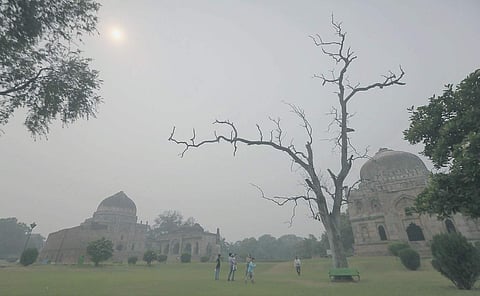

NEW DELHI: A spike in stubble burning incidents in neighbouring areas saw the national capital on Thursday continue to breathe in air under the ‘severe’ pollution category, as a smoky haze lingered over the city for the third consecutive day.
The effective stubble fire counts of Haryana and Punjab increased from the previous day count of 1,057 to 2,396, according to the Ministry of Earth Sciences’ air quality monitor, SAFAR.
According to SAFAR, the calm surface wind condition that has prevailed over the last two days has led to strong surface nocturnal inversion and accumulation of pollutants. The stubble fires’ percentage contribution to Delhi’s air quality is predicted to be 27 per cent on Thursday while it touched the season’s highest share of 35 per cent on 30th October. By Friday, it is expected to be around 25 per cent.
As per the Central Pollution Control Board (CPCB), 22 out of the 37 air quality monitoring stations across Delhi recorded air quality in the ‘severe’ category on Thursday morning.
Experts noted that the transport-level wind direction is forecasted to be northwesterly for the next three days and favourable for plume transport. An increase in surface wind speed is expected by Thursday, and AQI is forecasted to improve slightly, to end up in the higher-end of ‘very poor’ category by Friday.
“A fresh western disturbance as a trough between 3.1 & 3.6 km above mean sea level runs roughly along the Afghan-Pakistan border as of Thursday. It will approach northwest India by November 2. The western disturbance is likely to influence Delhi’s air quality positively. An improvement to the lower end of the very poor category is expected by the November 2,” SAFAR noted in a statement.
Because of the hazardous pollution levels in the national capital, doctors advised people to take a lot of precautions, including wearing face masks and avoiding early morning and late evening walks as the concentration of pollutants is at its highest during this period.
Delhi Deputy Chief Minister Manish Sisodia said that the decision to shut schools will be taken “when the need arises”.
In November 2017, the government had shut schools for a few days due to deteriorating air quality. This year, the government will start distributing 50 lakh N95 masks among students in Delhi from Friday, CM Kejriwal said.